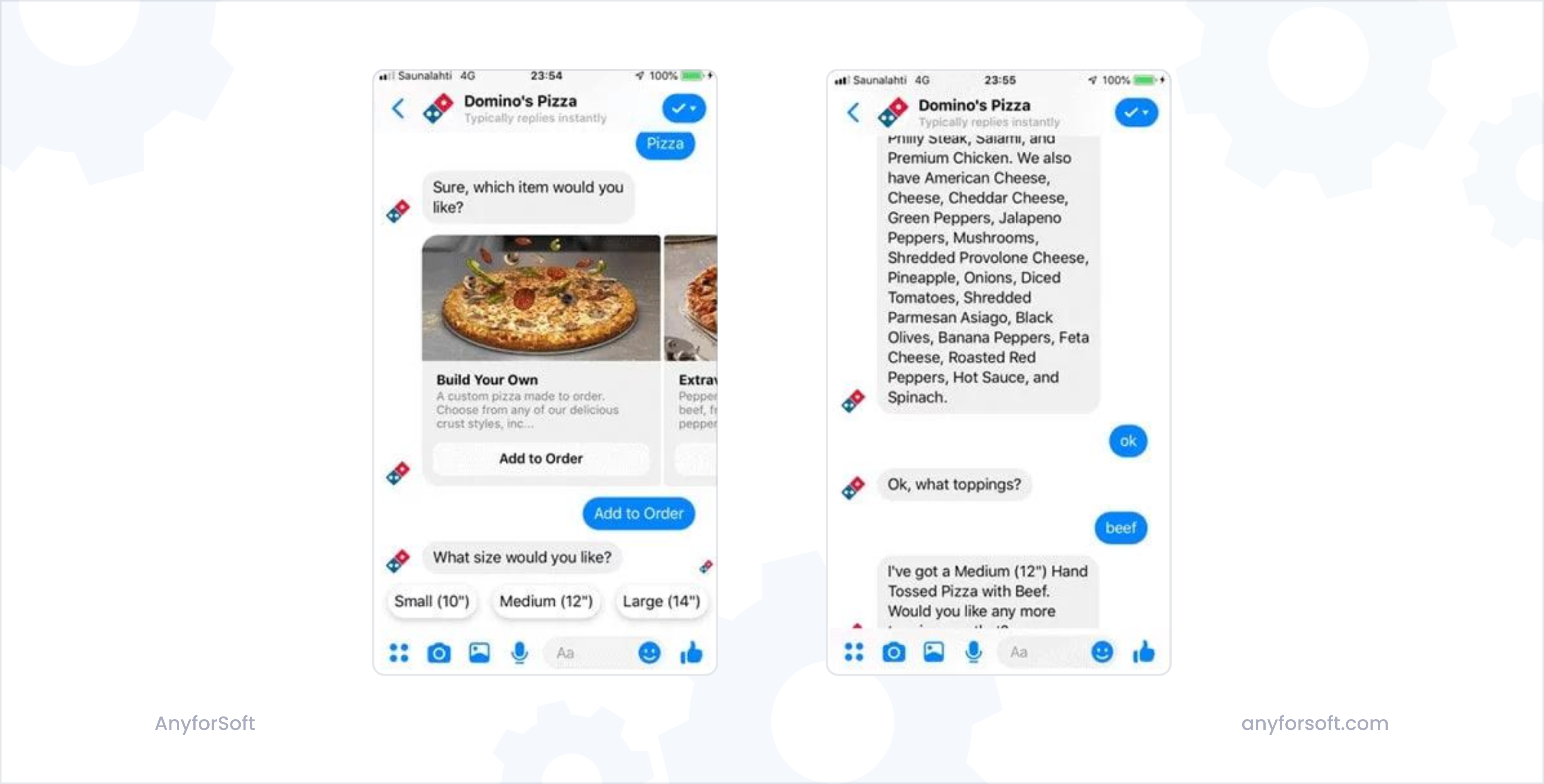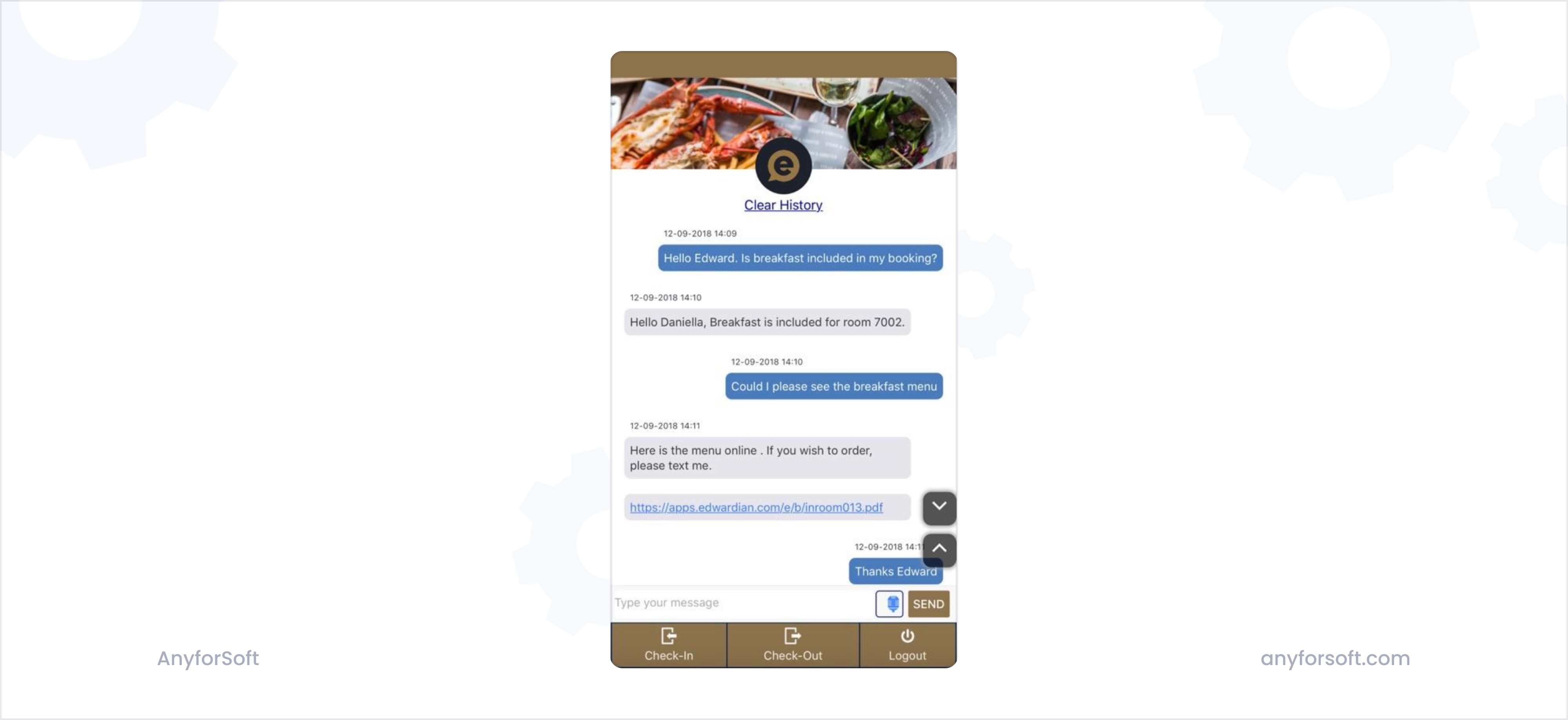Asking the difference between a chatbot and conversational AI is like asking the difference between cherry pie and cooking. Even though these terms are related, they’re not synonymous. A chatbot is a tool that emulates human-like conversations with users, while conversational AI is the technology that makes the creation of sophisticated AI-powered chatbots possible.
That constitutes all the difference, and we could finish here. But we won’t because otherwise you won’t learn the fine details and we won’t be able to rank such a short article on Google. So let’s help each other, shall we?
In the following paragraphs, we will discuss the “chatbot vs conversational AI” question and elaborate on the difference between the two terms. You will:
- Learn what a chatbot and conversational artificial intelligence are;
- See some examples of chatbots and conversational AI implementations;
- Discover how chatbots and conversational AI systems differ.
Without further ado, let’s get started!
What is a chatbot?
A chatbot is a software application that emulates human-like conversations with users. Chatbot solutions help elevate customer experience while decreasing customer service costs. No wonder the chatbot market is forecast to reach around $1.25 billion in 2025.
Such applications reply instantly, can work 24/7, and sometimes replace customer support teams altogether—that’s why businesses eagerly invest in chatbot development.
It’s important to know that there are two types of chatbots:
- Rule-based chatbots (also known as script-based chatbots or basic chatbots). These applications communicate through pre-programmed rules: if a user says “X”, reply with “Y”. Basic chatbots don’t understand human language and can’t learn from conversations. Consequently, they are unable to reply to new questions and get confused when the user phrases their question in an unusual way. Looking on the bright side, rule-based chatbots are relatively cheap to develop and maintain.
- AI-powered chatbots. AI-powered chatbots use artificial intelligence, machine learning, and natural language processing to understand the intent behind user queries and provide more human-like responses. They can understand human language (as far as technology does this) and learn from conversations. Unlike basic solutions, AI-driven conversational bots can respond to any question, regardless of how it is phrased. They take customer experience to a whole new level and can serve as a substitute for human customer support teams. However, such solutions are expensive to develop and maintain.
When talking about conversational AI technology, people usually refer to AI chatbots.
What is conversational AI?
Conversational AI is the technology that allows the creation of AI-powered chatbots. With the help of speech recognition and machine learning, conversational AI chatbot understands what people are saying, the conversion context, and the user intent behind queries. Unlike traditional chatbots, AI solutions can support multiple communication channels, including voice and video.
According to a report by MIT Technology Review, over 90% of businesses see significant improvements in complaint resolution, call processing, and customer and employee satisfaction with conversational AI chatbots.
The main difference between conversational AI solutions and chatbots is that the former is a technology while the latter is a software product. Of course, conversational AI is implemented not only in chatbots but also in:
- Voice assistants. Voice assistants are software programs that perform certain tasks based on voice commands. They use voice recognition, voice synthesis, and language processing algorithms to understand the command and provide the necessary outputs. Siri is one of the most popular examples of voice assistants.
- Virtual assistants (virtual agents). Virtual assistants are AI-based context-aware programs that help users perform specific tasks. They're powered by NLP and natural language understanding (NLU) models, which allows them to provide more personalized, accurate, and engaging outputs.
Traditional chatbots: examples and use cases
Rule-based chatbots are great for simple tasks. They can answer FAQs, help one with orders (placing orders, tracking, status updates), event scheduling, and so on. This type of chatbot is used in e-commerce, retail, restaurant, banking, finance, healthcare, and a myriad of other industries.
Let’s take a Domino’s Pizza chatbot as an example. Domino’s Pizza is one of the first companies to launch a Facebook Messenger bot. Named Dom, this bot can place orders, track delivery times, redirect customers to a human representative when necessary, and even process credit card entries.

Even though it is a simple script-based program, it is highly effective for this particular purpose and industry. When ordering food, we don’t need hours of sophisticated conversations—we just want to get our lunch quickly, with as little friction as possible. And this chatbot is perfect for a task like this. Not only does it improve customer experience but it also helps Domino’s Pizza reduce the burden on human staff.
Conversational AI chatbots: examples and use cases
Conversational AI chatbots are more sophisticated and can assist even with complex tasks, including product recommendations, disease diagnosis, financial consultation, and so on. Just like script-based solutions, AI-based chatbots are used in multiple industries, helping users with their queries.
A good example of a conversational AI chatbot is Edwardian Hotel’s bot Edward. Edward is a virtual host that supports over 9,000 interactions and understands 59 languages. No matter how you phrase your question, it is smart enough to understand it and provide you with assistance. You can ask the AI chatbot if your room is ready, book room services (massage, meals to your room, etc.), schedule events, and much more. This bot serves as a medium between you and the hotel staff—whenever you order something, the staff receives a notification from Edward and fulfills your needs.
This bot can:
- Inform guests about hotel amenities.
- Provide directions and tips.
- Help guests send complaints to management.
- Let guests select rooms.
- Process payments, and more.

While the development of such a solution requires significant investments, they can pay off quickly. Edward, for example, has helped the Edwardian Hotel increase room service sales by a whopping 50%.
Coming back to our “chatbots vs conversational AI” question, for this particular purpose and industry, an advanced conversational AI bot is perfect. Just think about it for a second: popular hotels like Edwardian Hotel target an international audience—each guest has their unique needs and may express them differently and in different languages. It would be nearly impossible to design a rule-based chatbot and pre-program it to respond to multiple questions your guests have while making sure it understands different languages. In this particular case, the conversational AI approach is the only wise decision.
Chatbots & conversational AI: a comparative table
To better understand how conversational AI and chatbots differ, take a look at this comparative table. We will be comparing traditional or rule-based chatbots with their conversational AI counterparts.
Chatbots and conversational AI apps: a side-by-side comparison
Conversational AI vs chatbot: wrapping up
We hope this article has cleared things up for you and now you understand how chatbots and conversational AI differ.
It would be wrong to say that one solution is better than the other: of course, conversational AI bots are more sophisticated and are better suited for complex tasks, but as we’ve shown with Domino’s Pizza example, sometimes a simple rule-based chatbot is more than enough.
So which option is better for your particular business and industry? This is up to you to decide. However, no matter what you choose, we can help you implement your idea. Having over 12 years of experience, AnyforSoft delivers projects of any complexity. As a customer-oriented company, we put our clients’ product vision at the forefront, ensuring the end result aligns with their needs and requirements. Contact us today to discuss your project!
